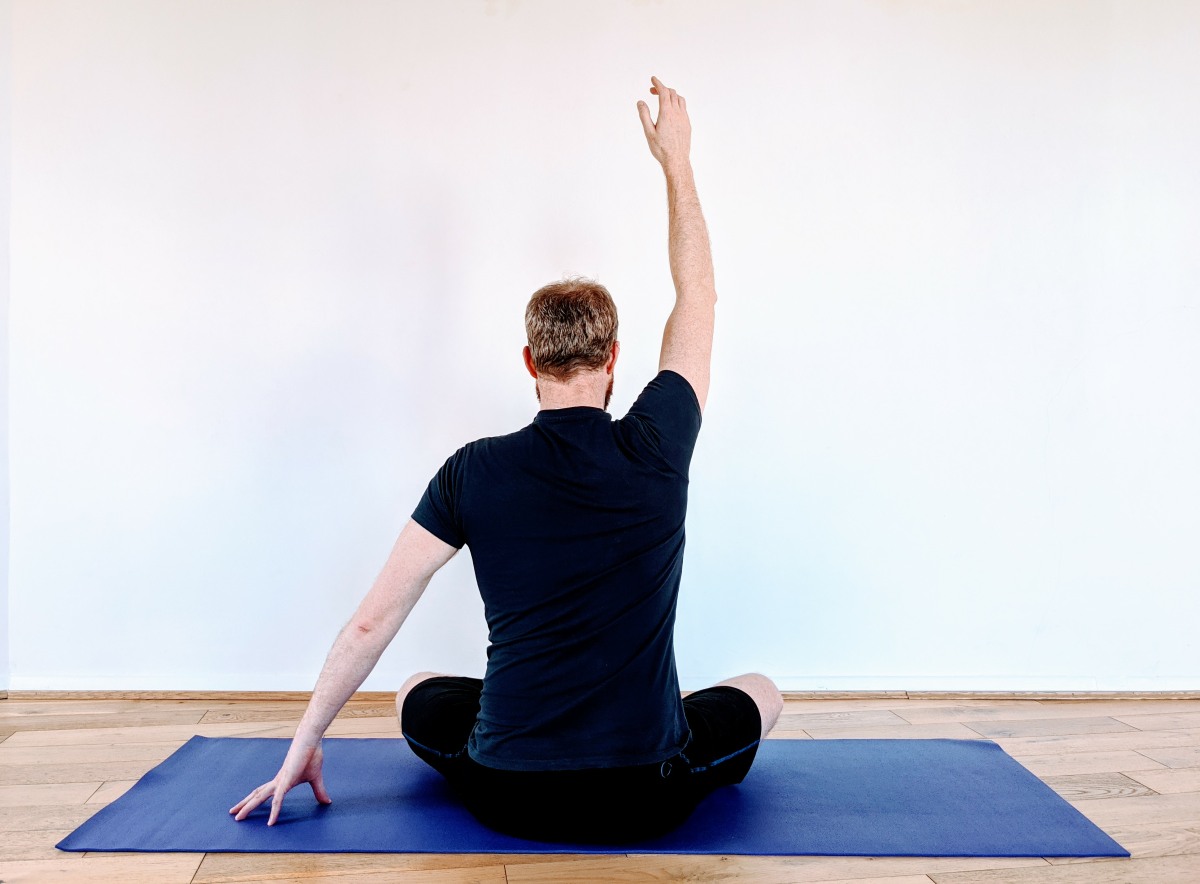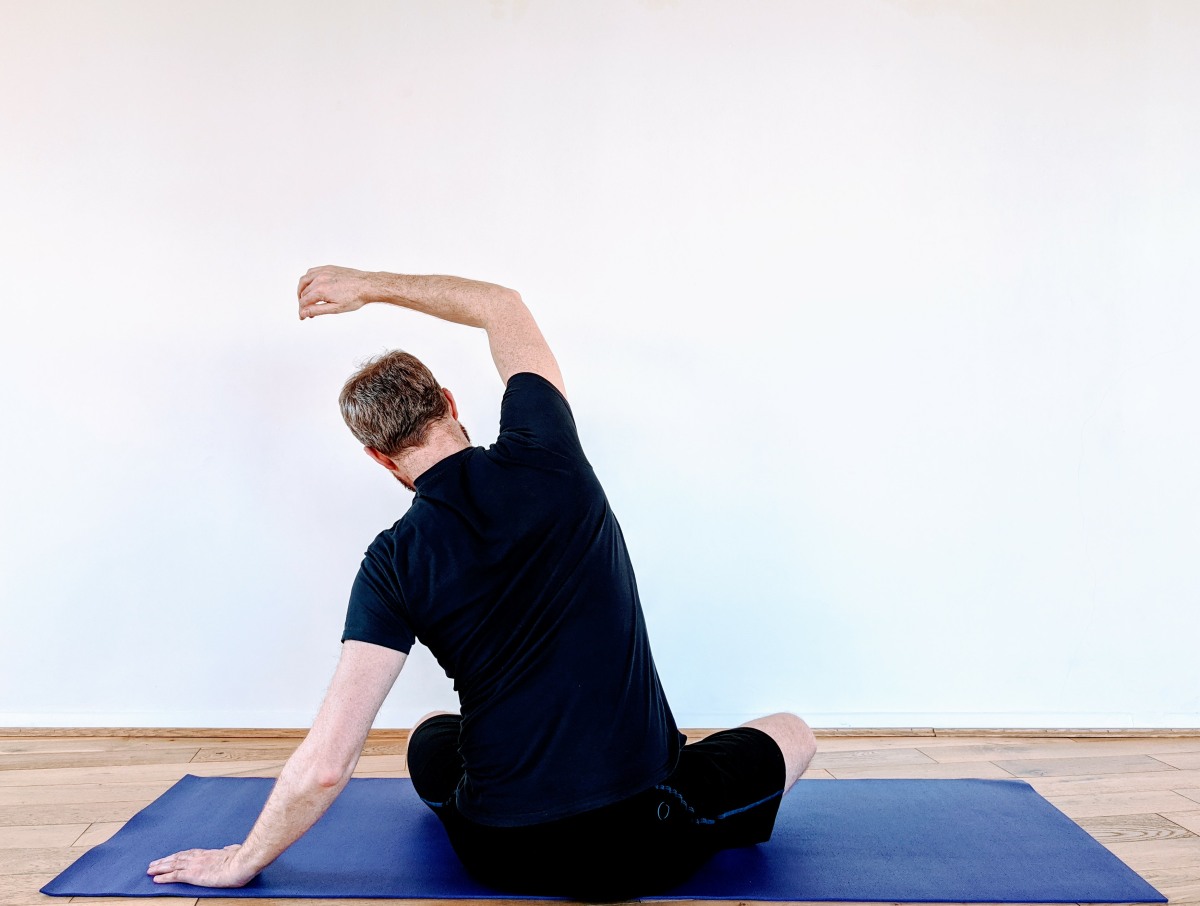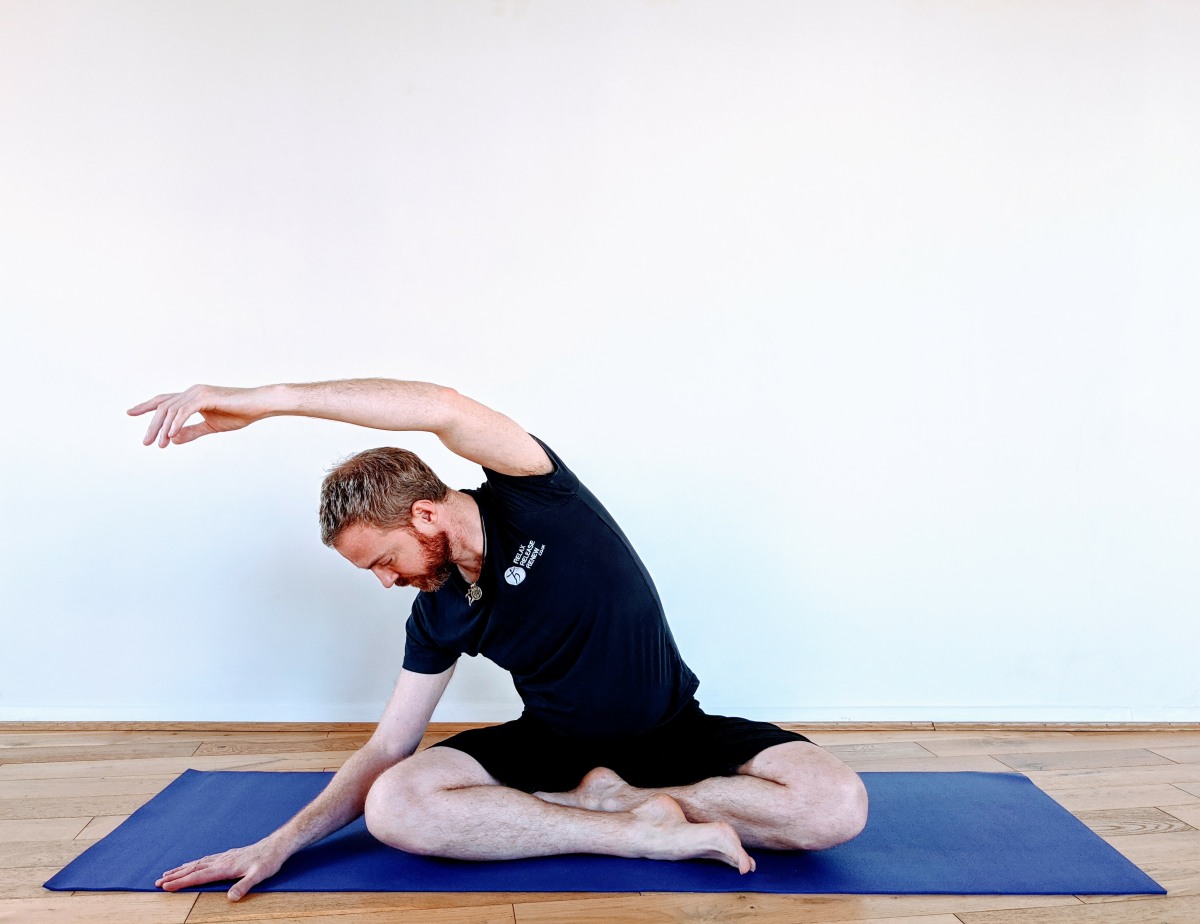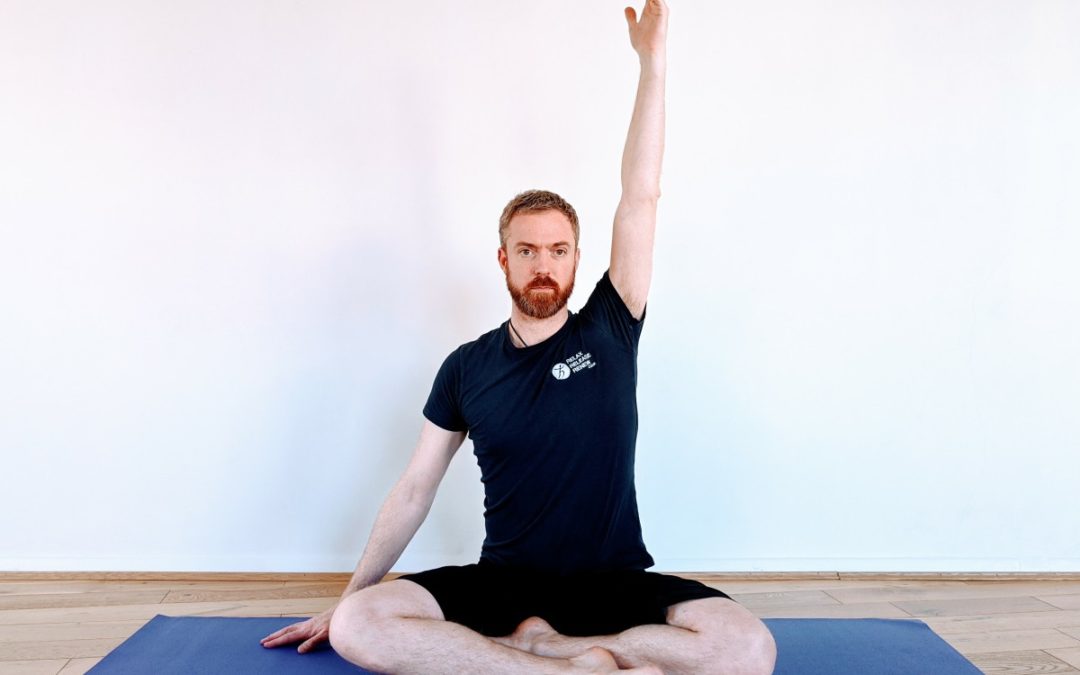Th following stretches look to get to the side of the body, and also the side of the lumbar spine. The muscles that is particularly targeted is the Quadratus Lumborum (QL for short, and because it’s easier to say).
The QL runs from the lowest ribs, the transverse processes of the lumbar spine to the top of the pelvis. If we use both QLs we encourage a back arch in the lumbar spine, whereas if only one is recruited we go towards a side bend. It’s opposite muscle is the Psoas (which is stretched with the Hip Flexors). It also helps to stabilise the low back each time we take a step and so if there are issues around the glutes we can get a gripping or tightening of the QL.
Equipment
None really necessary, but this can be done sitting on a bed (so the hands can reach out to something).
Stretch 1: Sideways bend
Steps
- Sit upright, with a long spine. I’m sitting cross legged as that is comfortable for me, but sitting on a bed works well.
- The sitting bones should be in contact with what you’re sitting on and should remain so throughout the stretch.
- Lift one arm up, which helps to lift the ribcage on that side.
- Using that sense of lift bend sideways to away from that arm, and the other arm can touch the bed/floor as a reference and support.
- Hold for 30 seconds
- Return to upright
- Repeat on the other side.
Things to think about
- The sitting bones should remain in contact with the ground through out.
- It is a sideways movement and you shouldn’t twist.


Stretch 2: A slight twist and reach
- Return to sitting upright, with a long spine. I’m sitting cross legged as that is comfortable for me, but sitting on a bed works well.
- The sitting bones should be in contact with what you’re sitting on and should remain so throughout the stretch.
- Lift one arm up, which helps to lift the ribcage on that side.
- Keeping that sense of lift rotate the spine so the breast bone is about 45 degrees away from the lifted arm , the other arm can touch the bed/floor as a reference and support.
- Reaching up and forward lean, but still keep the sitting bones heavy on the floor.
- Hold for 30 seconds
- Return to upright
- Repeat on the other side.
Things to think about
- The sitting bones should remain in contact with the ground through out.



Why do I say to hold the static stretch for 30 seconds? I put it like this: the first 10 seconds it feels like the muscles are shocked into wondering what this position is. Then the next 10 seconds they start to relax into the position, and the final 10 seconds they might also be able to move a bit deeper into the movement, and accept that this is possible.
These movements should not cause additional pain or discomfort, or cause new pain. If they do then please stop and get some advice on what is happening to your body.
Video
Here’s a short video of my going through this stretch.
Thanks for reading this my lovely Interonauts.
Tim


